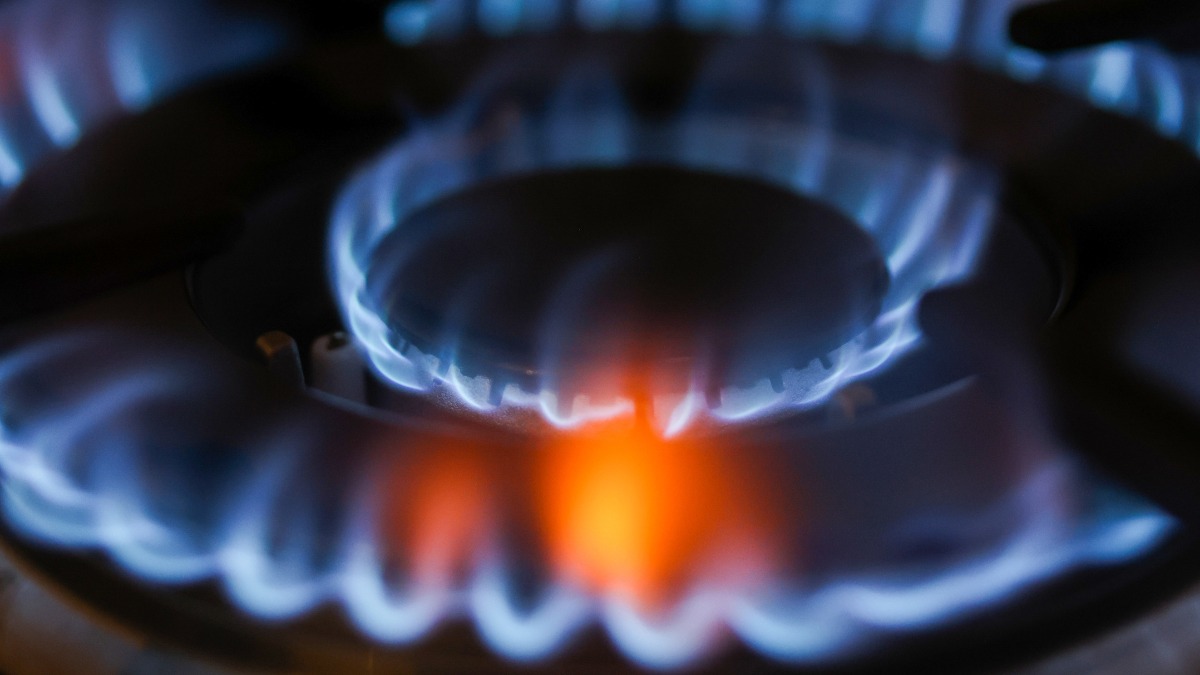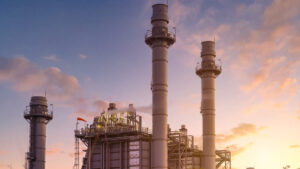Stockhead’s Great Big Aussie Gas Digest Part 1: East Coast

Cooking with gas? These Aussie projects could address a looming supply crisis. Pic: Getty Images
Shackled by red tape, devalued by the market’s embrace of ESG and hobbled during the pandemic, a few years ago you would have been forgiven for thinking gas was a dying industry.
But a price surge in 2022 and major shortages in Australian gas supply flagged by key agencies are putting the energy sector back on the map.
It takes a steady hand to navigate the sensitive nature of the Aussie gas game. That’s why we’ve got Stockhead’s senior energy journalist Bevis Yeo on the case in this two-part special to tell you which gas projects could be goers in our Great Big Aussie Gas Digest.
Australia has a problem – we are edging ever closer to a domestic gas supply crisis.
The Australian Energy Market Operator beat this drum in its 2024 Gas Statement of Opportunities, warning eastern Australia could experience shortfalls on extreme peak demand days from 2025 and small seasonal supply gaps from 2026.
The next step will be load shedding – literally turning the lights off – during periods of peak demand.
More recently, the Australian Competition & Consumer Commission added to this call.
It says we run the risk of a shortfall in the third quarter of 2025, when frosty Aussies turn up the dials on their heaters.
Unless new sources are made available, the ACCC thinks the market would experience gas supply shortfalls as early as 2027 – a year earlier than previous reports forecast.
Gas consumption for power generation is rising at the same time as red tape delays new projects and legacy gas fields see production issues.
Folks with a little more familiarity with Aussie gas will point out that Australia actually produces more than it needs – most is actually exported as liquefied natural gas to overseas customers. So why can’t some of those volumes be rerouted for domestic use?
There’s even a mechanism in place – the Australian Domestic Gas Security Mechanism – that can stop the export of LNG and increase gas supply to the domestic market.
But the vast majority of LNG exports are on long-term contracts and pulling gas shipments would be akin to breaking these contracts, impacting Australia’s standing as a reliable partner.
These long-term contracts will expire in the mid-2030s and could offer the opportunity for negotiations to supply the domestic market in times of need, but shortages will arrive much sooner. In the meantime, we will need more gas supplies to keep pace.
Here at Stockhead we’ve put together your ultimate guide on which companies could develop the gas projects.
Our first part looks at who could fill the yawning gap emerging on the East Coast.
Narrabri Gas Project
Santos’ (ASX:STO) Narrabri coal seam gas field in New South Wales’ Gunnedah Basin is wholly aimed at the domestic market and has resources of about 1.8 trillion cubic feet of gas, enough to meet up to half of the state’s needs.
Full development of the field will consist of the progressive development of up to 850 wells that will produce ~200 terajoules per day (TJ/d) of gas to service the NSW market via pipeline over an estimated 25-year field life.
By every measure, Narrabri should have had a clear route towards development particularly in recent years as the threat of gas shortages becomes more urgent.
However, the project has become mired in red tape and legal challenges despite the state’s Independent Planning Commission granting the company approval to develop its resources all the way back in September 2020 and significant sums spent on exploration and other work since 2012.
This is despite Federal Resources Minister Madeline King noting in May that Narrabri is important and could relieve a lot of pressure on gas supply in NSW.
Should the route to development be cleared, the project will be able to substantially ease concerns about gas shortages, however its future remains clouded at the moment.

Atlas and Roma North
What might go a significant way towards easing gas shortage concerns is the recent Federal Government approval for the expansion of the Atlas and Roma North fields in Queensland operated by Senex, which is jointly owned by South Korean steel maker Posco International and Gina Rinehart’s Hancock Prospecting.
The expansion was previously suspended by Senex in 2022 after the government intervened in the gas market by setting a price cap, but was placed back on the menu after securing an exemption.
The approval allows the company to drill 120 new CSG wells, which will deliver about 60 petajoules of gas per annum – doubling existing production. This represents about 10% of the annual east coast gas requirements.
Gas from the expansion is expected to flow into the market from the end of 2025.
Mahalo Gas Hub
The Mahalo gas hub sits within the Denison Trough about 240km west of Gladstone in the southern Bowen Basin, Queensland, and consisst of the Mahalo Joint Venture between Santos (42.86%) and Comet Ridge (ASX:COI) with a 57.14% interest towards the south and Comet Ridge’s wholly-owned tenements to the north.
The Mahalo JV project currently has proved and probable (2P) reserves of 266 petajoules (PJ), or 252.1 billion cubic feet (Bcf), with a further 315PJ in best estimate (2C) contingent resources and has proven prospectivity with two successful lateral pilot production tests.
It benefits from having been awarded both the State Government Environmental Authority and Federal Environment Protection and Biodiversity Act (non-controlled action) awarded.
Santos is currently finalising the concept selection before it carries out the front-end engineering and design for the gas production and processing facilities while energy infrastructure operator Jemena will also be carrying out FEED for a new 80km connection from the JV project to both the Queensland Gas Pipeline and Gladstone LNG pipelines for domestic and LNG markets.
First gas from the Mahalo JV is expected in 2027.
The other part of the Mahalo gas hub is COI’s wholly-owned tenements to the north with the most advanced – Mahalo North – already hosting 2P reserves of 43PJ of gas thanks to the successful Mahalo North-1 pilot, that produced 1.75 million cubic feet of gas per day during testing.
Mahalo East has a 2C contingent resource of 31PJ with a production test due later this year.
COI expects to secure state environmental approval for the bottom half of Mahalo North in early July with federal approval to follow later this year.
It is also deciding between using the planned Jemena pipeline from the Mahalo JV project or connecting to the existing small diameter pipeline about 14km to the west, which could enable gas to come on stream in the first half of 2026.

Odin/Vali gas fields
The Odin gas field, which straddles the border between South Australia (PRL 211) and Queensland (ATP 2021), and the Vali gas field in ATP 2021 are jointly held by Vintage Energy (ASX:VEN) with a 50% interest, Metgasco (ASX:MEL) with 25% and Bridgeport holding the remaining 25%.
Vali has 2P reserves of 97.4PJ as of the end of 2023 while Odin hosts 2C contingent resources of 39.7PJ.
Collectively, the two fields produced about 0.52PJ of gas during the first half of FY2024 and generated sales revenue of ~$5m.
This is likely to increase once Odin-2, which is currently been completed as a multi-formation producer, is tied into the production network.
Operations to establish gas production from the shallower Toolachee formation at Vali-2 are also scheduled to be conducted from mid-July.
Enterprise project
Beach Energy (ASX:BPT) recently connected its 60%-owned Enterprise gas field to the Otway gas plant with first sales delivered on June 12.
The field, which was discovered in FY2021, has a 2P reserve of 34 million barrels of oil equivalent – including 161PJ of gas.
The Enterprise production well was drilled directionally from an onshore location about 3.5km from Port Campbell to the field about 2.5km from the shoreline.
Gas from the field is sold to Origin Energy under a gas sales agreement that is valid until the end of CY2026.
Production could be expanded when the company connects the Thylacine West field in 1H 2025.
Moranbah gas project
Originally acquired by Queensland Pacific Metals (ASX:QPM) in August 2023 to secure gas supplies for its TECH nickel project, the company pivoted instead to increase production from the Moranbah gas project to help meet east coast gas demand.
Moranbah, which captures waste mine gas (methane) from coal mines and makes it available for use, currently has 2P reserves of 331PJ, over 200PJ of which is uncontracted.
It currently produces about 10PJ of gas per annum though the company is planning new wells and additional workovers to increase output.
QPM also recently received $3m from the Queensland Government for a trial program of new wells that will target the Fort Cooper Coal Measures (FCCM), which include the Fairhill seam, on the western flank of the Northern Bowen Basin.
These sit above coal seams that will be mined using longwall techniques and are noted for its high gas content. The FCCM is also noted for its thickness relative to other seams – ranging between 50m and 150m compared with 2-8m for seams currently subject to mining.
Despite this, the FCCM is not currently subject to gas drainage activities and is not currently included in the Moranbah project’s current gas reserves.
Omega project
With proven 2C contingent resources of 1.51 trillion cubic feet of gas and 68.6 million barrels of liquids, Omega Oil & Gas’ (ASX:OMA) Omega project in the Taroom Trough within Queensland’s Surat-Bowen Basin is another project with the potential to help alleviate shortages.
It’s just 50km away from the existing Wallumbilla Gladstone pipeline, meaning any discovery can be quickly brought into production.
OMA is currently progressing towards the drilling of the Canyon-1H horizontal well in Q3, 2024, the first horizontal to be drilled into the highly prospective Canyon Sandstone at the base of the Kianga Formation.
Development could be achieved with as few as six horizontal wells up to an 18-20 well development that is large enough to attract a project farm-in partner to help with funding drilling and infrastructure.
VIC/P79 and T/49P
Held jointly by ConocoPhillips and 3D Energi (ASX:TDO) in an 80/20 joint venture, the VIC/P79 and T/49P exploration permits in the offshore Otway Basin will be the subject of a two-well program that will be drilled in 2025, pending regulatory approval.
These wells will test prospects characterised by good quality 3D seismic with the Monarch prospect, which has 316Bcf of prospective resources, being of particular interest.
It is the largest undrilled structure in VIC/P79 and is an inferred gas-water contact detected on reprocessed data, based on an observed ‘flat spot’, and is consistent with local gas fields.
While drilling is required to determine if gas is indeed present, the Otway Basin has a high 88% success rate when drilling amplitude-supported prospects on 3D seismic.
Innamincka gas project
The Innamincka gas project held by Santos (80%) and Red Sky Energy (ASX:ROG) (20%) has generated >$2m in cashflow for ROG since production started in August 2023.
While generally of a small scale then many other projects listed here, the project benefits from having stable flow rates and being an existing producer.
The joint venture is also keen to increase output with further development wells to be drilled from late 2025.
Onshore Northern Territory
It is not just projects in the eastern states that can help address the gas shortage. The Northern Territory is also home to significant resources with existing pipeline links to the east.
It is also home to the emerging Beetaloo Sub-Basin, which has geology similar to that of the highly productive Marcellus shale, where more than $600m has been invested by various public and private companies in its exploration, appraisal and development.
Much has been made about how Beetaloo could answer the east’s gas woes and it likely has the resources to do so, but it currently lacks sufficient infrastructure to really deliver said gas where it is needed.
Mereenie oil and gas field
First up is the producing Mereenie field held by operator Central Petroleum (ASX:CTP) (25%), Macquarie Mereenie (50%), New Zealand Oil & Gas (ASX:NZO) – (17.5%) and Cue Energy Resources (ASX:CUE) (7.5%), that has been producing for over 30 years.
While gas produced from the field has been sold to the NT to date, the JV recently issued an expression of interest for the supply of up to 40TJ/d or 90PJ of gas from mid-2024 to the end of 2030.
This represents about two-thirds of the NT’s current gas requirements and can easily support the minimum flow of 20TJ/d required to ensure the long-term stability of the Northern Gas Pipeline, which links the Territory to Queensland.
Securing gas contracts under the EOI will allow the JV to proceed with a final investment decision for drilling multiple wells at Mereenie, including two drill-ready development wells.
Mereenie currently has 2P reserves of ~150PJ.
Beetaloo project
Tamboran Resources (ASX:TBN) is one of, if not the largest, acreage holders in the Beetaloo with 1.9 million acres of ground in wholly-owned tenements and joint ventures – one with Santos and the other with Falcon Oil & Gas and Daly Waters Energy.
Appraisal wells drilled by the company have already identified the dry gas shale target of the Middle Velkerri B formation as the most productive, though other sections will also be considered for future development.
Tamboran have operated drilling of four wells in the Beetaloo Basin to date and stimulated and flow tested two wells, both producing natural gas to surface. The SS-1H well, which was flow tested earlier this year achieved a record normalised flow rate for the basin, demonstrating recoverable volumes in line with the Marcellus Basin in the US, generally seen as the most prolific shale basin in the world.
TBN plans to drill and complete an additional two wells in 2024 and four wells in 2025 as well as progress a project to design and construct a 40MMcf/d compression and dehydration facility as well as a ~35km pipeline to the existing gas pipeline network.
This is aimed at achieving ~40MMcf/d production in 1H 2026.
The next phase of its strategy is to drill between 100-200 wells to produce gas to supply the east coast and NT markets, while the third phase will see additional wells drilled with the intent to supply gas for export.
Carpentaria pilot project
Also operating in the Beetaloo and expecting commercial production to begin a little earlier in 2025 is Empire Energy (ASX:EEG) with its Carpentaria pilot project, which has a 2C contingent resource of >1.6Tcf.
Two horizontal wells drilled by the company have achieved excellent rates normalised at about 3.5TJ/d (3.3MMcf/d) per 1000m, enabling the company to move into pilot production once it makes a final investment decision.
Pilot production will process gas through the company’s existing Carpentaria Gas Plant which has a design capacity of 42 TJ/d.
It will use the existing McArthur River Gas Pipeline capacity to produce up to 25 TJ/d in the pilot phase.
In the longer run, the company has delineated more than 200 drilling locations targeting the B shale and another 600 additional locations across the A, Intra A/B and C Shales.
At Stockhead we tell it like it is. While Comet Ridge and Queensland Pacific Metals are Stockhead advertisers, they did not sponsor this article.
Related Topics

UNLOCK INSIGHTS
Discover the untold stories of emerging ASX stocks.
Daily news and expert analysis, it's free to subscribe.
By proceeding, you confirm you understand that we handle personal information in accordance with our Privacy Policy.








